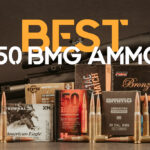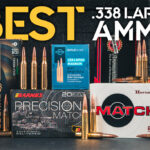
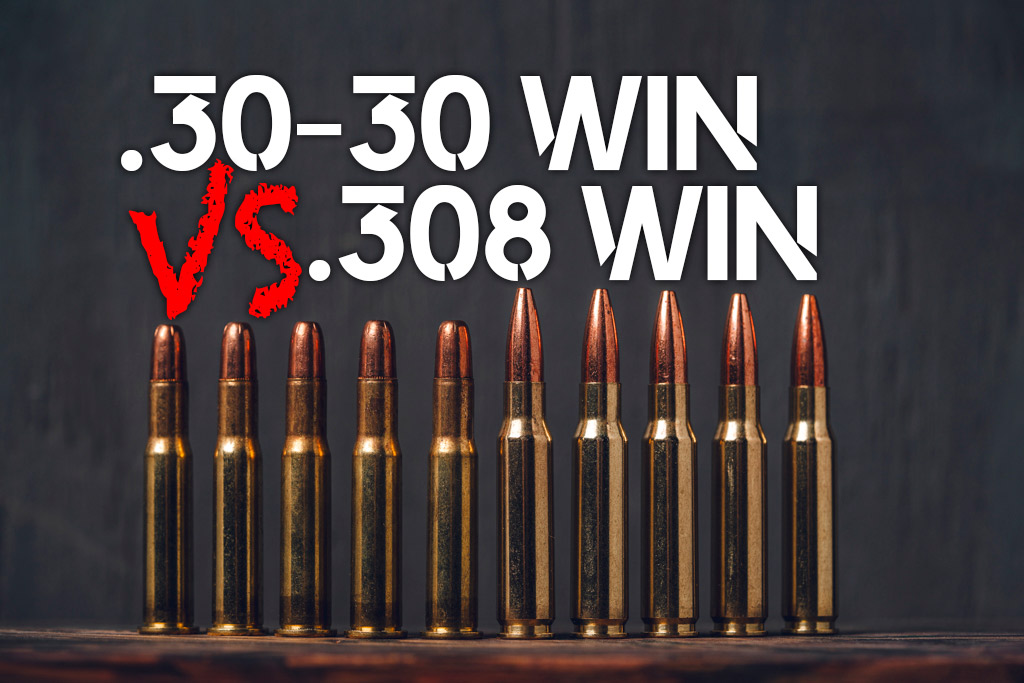
Regarding rifle cartridges, the debate between 30-30 VS 308 is a classic that continues to pique the interest of shooters. Both cartridges have established a strong presence in the world of hunting and shooting. This comparison will provide a thorough overview of their history and practical uses for those wondering which round suits their needs best. It will also cover compatible weapons, bullet types, ballistics, long-distance considerations, cost, and availability.
Join us in this 30-30 VS 308 comparison as we explore the history and capabilities of these two classic cartridges.
30-30 VS 308
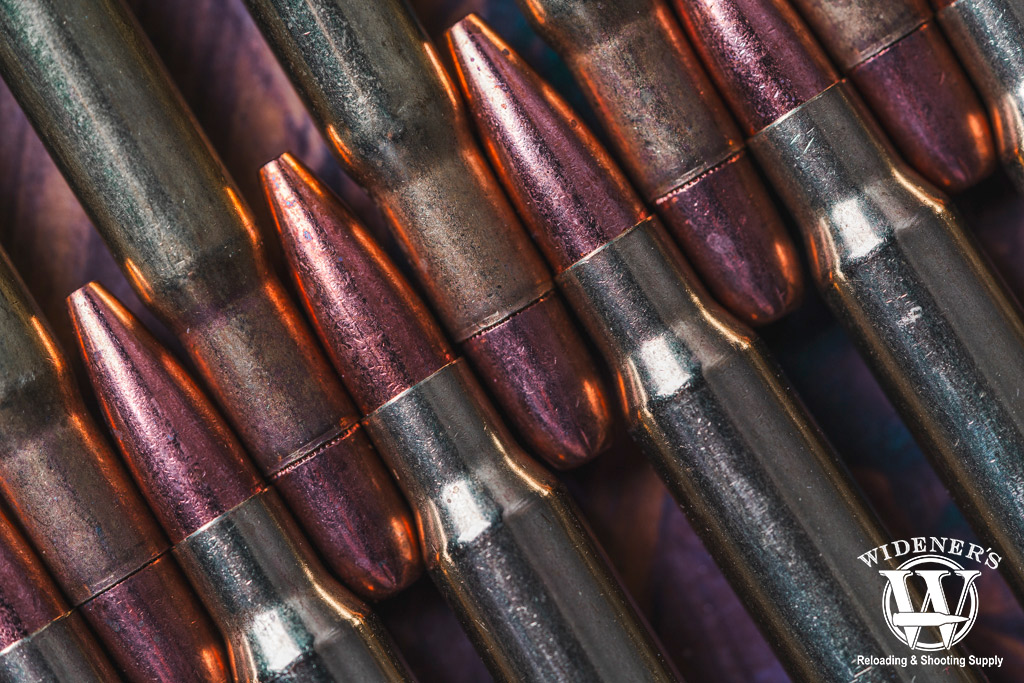
Most consider the .30-30(Top) to be a hunting round, while the .308 (Bottom) handles a variety of duties with ease.
What are the differences between the 30-30 VS 308? It comes down to the size of the cartridge, the long-range capability, recoil, and more.
Differences between 30-30 VS 308:
- Cartridge Size (308 is larger)
- Power (308 is faster)
- Long Range (308 has better range)
- Recoil (30-30 has less on average)
- Price & Availability (Similar, 308 has more options)
Let’s look at these in more depth.
Case Size Comparison
The .308 Win is larger than .30-30, yet smaller than the 30-06 despite all three using similar diameter bullets. The .308 Win uses a more modern projectile, and the casing holds more powder. Simply put, the .308 is more powerful than the .30-30, it’s larger casing allows the .308 Win to send bullets faster and further.
| Cartridge Specs | .308 Win | .30-30 |
|---|---|---|
| Parent Casing | .300 Savage | .38-55 Win |
| Bullet Diameter | .308″ | .308″ |
| Neck Diameter | .3433″ | .330″ |
| Base Diameter | .4709″ | .422″ |
| Case Length | 2.015″ | 2.039″ |
| Overall Length | 2.8″ | 2.550″ |
| Grain Weight | 110gr-180gr | 110gr-190gr |
| Max Pressure (SAMMI) | 62,000 PSI | 42,000 PSI |
Dimensions for the .308:
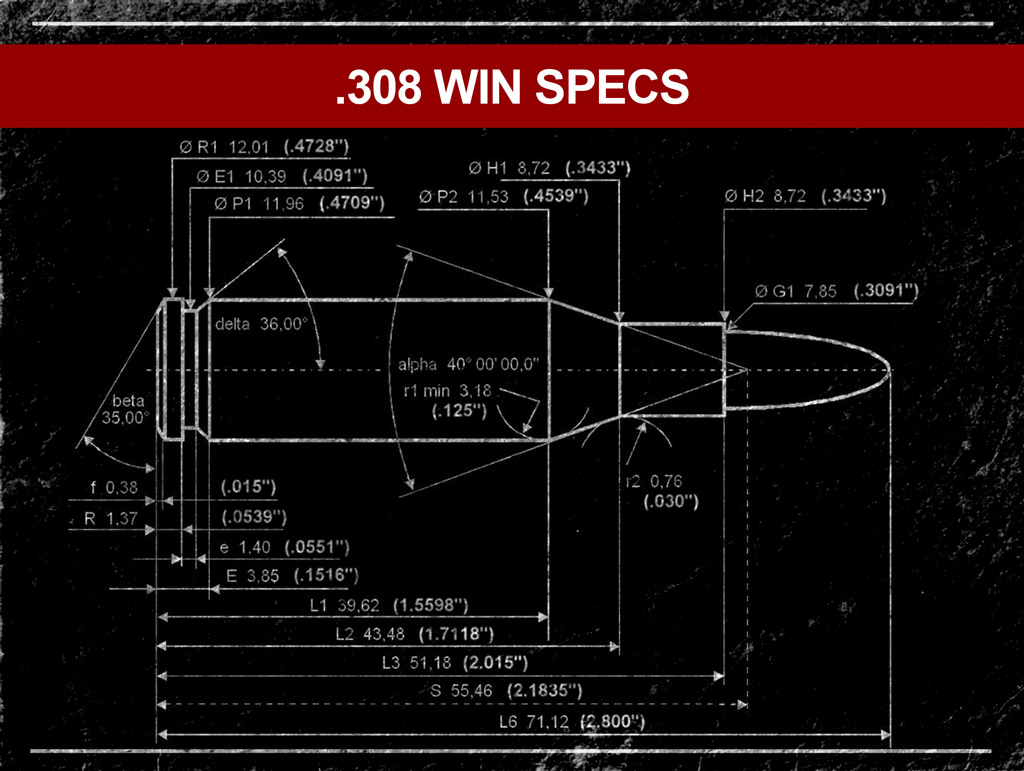
The .308 Winchester is a centerfire cartridge with a larger powder capacity than the .30-30.
- Designed: 1952
- Designer: Winchester Repeating Arms Company
- Type: Rimless, Bottleneck Centerfire
- Case capacity: 56 grH2O
Dimensions for the .30-30:
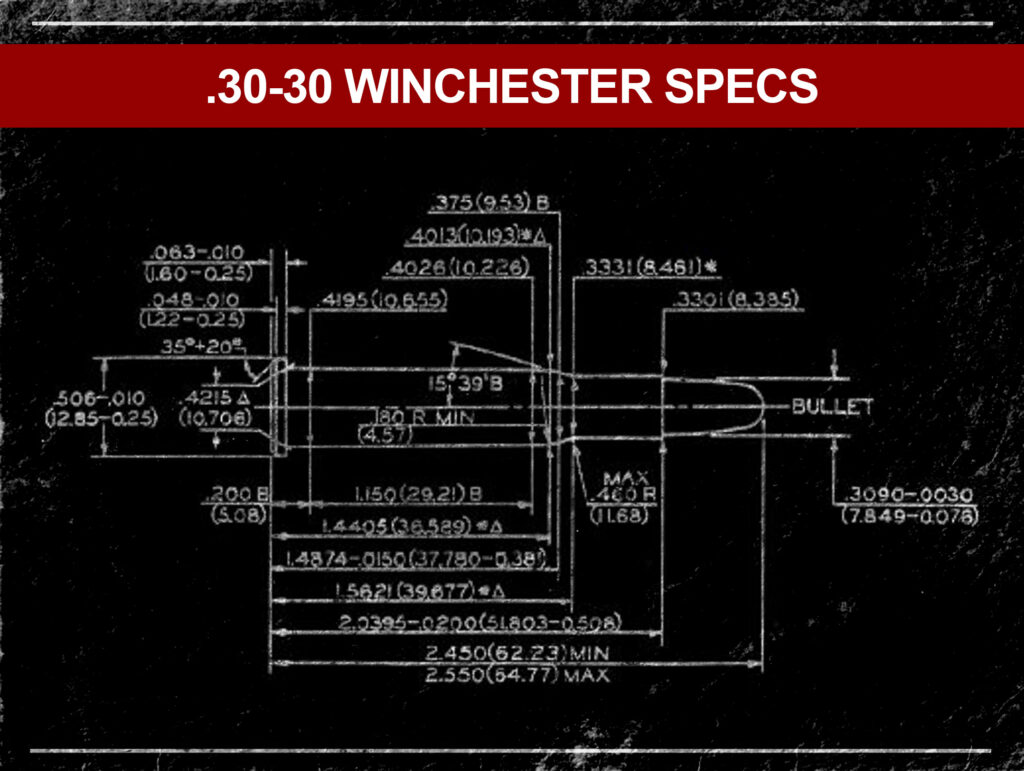
.30-30 uses the same bullet diameter as the .308, however, its shorter case limits its ballistic capabilities.
- Designed: 1895
- Designer: Winchester
- Type: Centerfire Rifle (Rimmed)
- Case capacity: 45gr H2O
Ballistics Compared: 30-30 VS 308
The 30-30 has a moderate velocity and trajectory, with effective energy delivery at short to medium ranges. It loses energy quicker than the .308 due to its bullet design and velocity.
The .308 offers a flatter trajectory and retains energy and velocity better over longer distances, making it more suitable for long-range shooting. The cartridge can easily take down your prey at 300 yards or longer distances if you’ve got the right glass and a firm grasp on good shooting mechanics.
Let’s take a look at some popular cartridge examples below. Use the numbers as a general reference. As you know, there are many ballistic variations based on the atmosphere, weather, barrel length, and ammunition choice.
Standard Ballistics
The 150gr FMJ in .308 is an industry-standard performer. It hits 2,820 FPS in muzzle velocity leaving the test barrel, with an impressive 2,820 FT LBS of energy. Bullet energy stays well over 1,500 FT LBS out to 300 yards and beyond, giving it way more stopping power than the .30-30. Bullet drop is non-existent at 100 yards and only 8 inches at 300 yards, showing off its relatively flat trajectory.
For a 150gr LRN .30-30 cartridge, you’ll get a respectable muzzle velocity of 2,390 FPS, and 1,276 FPS at 300 yards. The energy will be about 1,900 FT LBS at the muzzle, dropping all the way to 542 FT LBS at 300 yards. Bullet drop is negligible at 100 yards but falls 29.6 inches at the 300 yard mark.
| Caliber | Bullet Type | Bullet Weight | Velocity (Muzzle) | Energy (Muzzle) | 100 Yards (Velocity/Energy) | 200 Yards (Velocity/Energy) | 300 Yards (Velocity/Energy) |
|---|---|---|---|---|---|---|---|
| .308 | FMJ | 150gr | 2,820 FPS | 2,648 FT LBS | 2,597 FPS/2,246 FT LBS | 2,385 FPS/1,894 FT LBS | 2,183 FPS/1,586 FT LBS |
| .30-30 | LRN | 150gr | 2,390 FPS | 1,902 FT LBS | 1,959 FPS/1,287 FT LBS | 1,581 FPS/832 FT LBS | 1,276 FPS/542 FT LBS |
Hunting Ballistics
The 150gr JSP in .308 is a deer hunter’s best friend. It hits 2,820 in muzzle velocity leaving the barrel, with an impressive 2,648 FT LBS of energy. Bullet energy stays well over 1,000 FT LBS to 300 yards and beyond, giving it more power to drop a deer at a distance than the .30-30. Bullet drop is negligible at 100 yards and it stays strong, only dropping 8 inches at 300 yards.
For the 150gr JSP round in .30-30, you’ll get a muzzle velocity of 2,390 FPS, which drops to 1,399 FPS at 300 yards. The energy output will be 1,902 FT LBS at the muzzle, dropping to 652 FT LBS at 300 yards. That’s still enough to take a deer at that range, which is saying something for this older design. Bullet drop is minimal until 300 yards when it falls about 15.9 inches below the point of aim.
| Caliber | Bullet Type | Bullet Weight | Velocity (Muzzle) | Energy (Muzzle) | 100 Yards (Velocity/Energy) | 200 Yards (Velocity/Energy) | 300 Yards (Velocity/Energy) |
|---|---|---|---|---|---|---|---|
| .308 | JSP | 150gr | 2,820 FPS | 2,648 FT LBS | 2,600 FPS/2,252 FT LBS | 2,391 FPS/1,903 FT LBS | 2,191 FPS/1,599 FT LBS |
| .30-30 | JSP | 150gr | 2,390 FPS | 1,902 FT LBS | 2,019 FPS/1,358 FT LBS | 1,686 FPS/947 FT LBS | 1,399 FPS/652 FT LBS |
Common Bullet Types & Weights
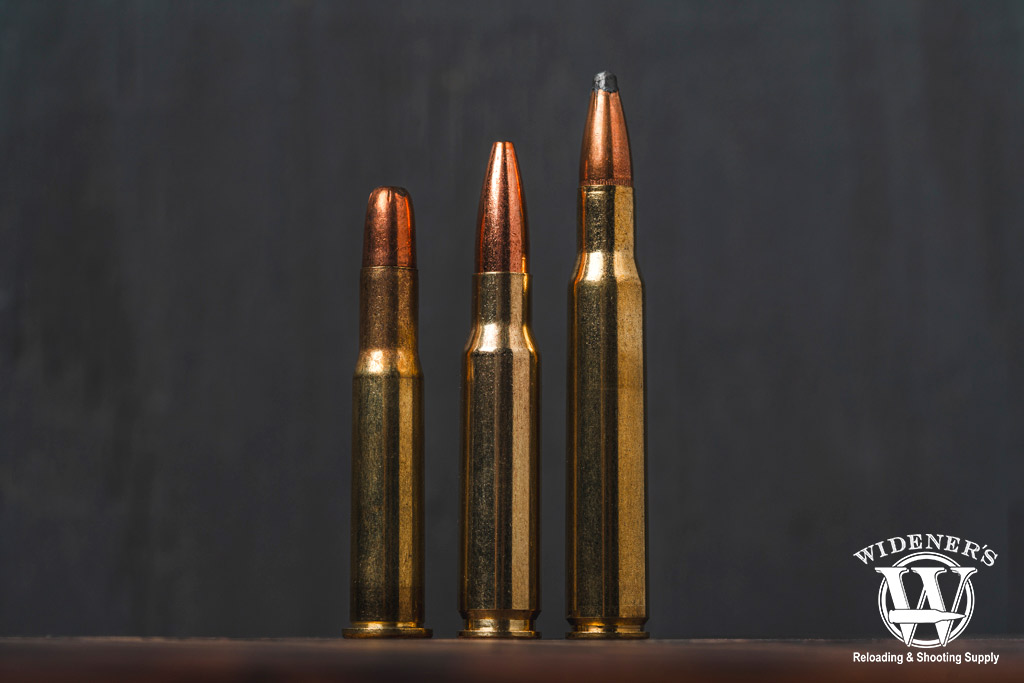
Comparing the 30-30 Win (Left), 308 Win (Center), and 30-06 Springfield (Right) cartridges.
Typically, 30-30 bullets range from 150 to 170 grains, with flat or round-nosed projectiles being common to accommodate tubular magazines in lever-action rifles. That said, there are plenty of outliers and odd-ball rounds out there. If you are looking for something unique, there’s a good chance you can find it.
The .308 Winchester fires bullets ranging from 125 to 180 grains, with a wider variety of bullet types available, including solid core, hollow point, and more. While 30-30 ammo is by no means rare, .308 cartridges are easier to find. You’ll also find more opportunities to buy in bulk, which can drive down your per-cartridge cost.
Long Distance Considerations
While effective within 200 yards, the 30-30’s performance drops significantly at longer ranges, making it less ideal for long-distance shooting. Its energy gives you more than enough power to drop a deer at standard distances. But its bullet drop at 300 yards, and beyond leaves something to be desired in performance.
The .308 excels at longer distances, maintaining accuracy and lethality well past 500 yards. That’s why it’s a preferred choice for long-range hunting and tactical shooting. The range of the .308 cartridge will depend heavily on your skill, the quality and length of your barrel, and the quality of your scope.
Recoil
Thre .30-30 might seem outdated in several ballistic categories. However, it makes up for it when it comes to felt recoil. The .30-30 is the clear winner in terms of recoil, however, a lot of it depends on your rifle setup. Expect older lever guns not to handle the recoil as well as a modern bolt-action setup. The cartridge’s design lends itself to generating light recoil, making it a favorite among deer hunters nationwide. Both cartridges have a kick to them, but the .30-30 generally kicks a little bit softer.
Practical Uses
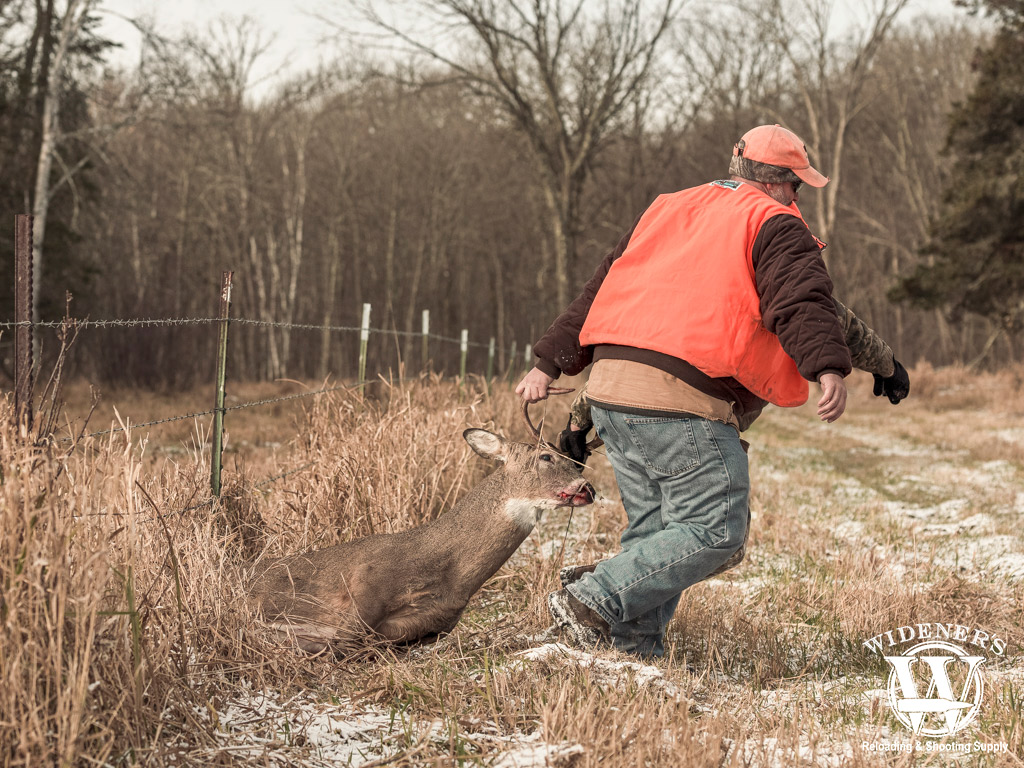
If you plan to go hunting in dense woods, or heavy brush in the South, the .30-30 makes a very effective caliber option.
The 30-30 is famous for its effectiveness in brush hunting and short to medium-range shooting, particularly for deer-sized game. There’s a reason hunters have trusted the cartridge to put meat on the table for more than 100 years. Its moderate recoil and effectiveness within 200 yards make it a top choice for hunters in wooded or brushy areas.
While the 30-30 has a respectable amount of power, it is still manageable in terms of recoil. As such, it’s a good choice for newer and more seasoned shooters.
The .308 offers greater versatility, being suitable for a broader range of game, from deer to elk, and is effective at longer ranges. Law enforcement and military snipers often use it, and it’s a favorite for hunting and competitive shooting. It does have a bit more kick, which can be a problem for some small framed shooters.
Compatible Weapons for 30-30 and .308
Traditionally chambered in lever-action rifles like the Winchester Model 94 and Marlin Model 336, 30-30 lever-action rifles are known for their reliability and quick handling. There is a vast selection of rifles chambered in 30-30, so you should have no problem finding a gun that fits your budget.
The .308 is chambered in various firearms, including bolt-action rifles like the Remington 700, semi-automatics like the AR-10, and even some lever-action models. Its versatility in different firearm platforms makes it popular among many shooters.
The .308 is far more versatile than its older counterpart. While the market for AR-10 components is not quite as large as that for AR-15s, there are still many options. Whether you want to buy a range-ready rifle from your favorite manufacturer or build your own AR-10 from the ground up, you can.
Opting for a modular weapon system like the AR-10 also opens the door for future upgrades. If you need a budget option now, you can get a reliable AR-10 for under $1,000 (or cheaper if you shop around). However, you can easily upgrade specific components later, like your trigger, gas system, and more.
Cost and Availability
Generally, 30-30 ammo is reasonably priced and widely available, though it may be less common than some modern calibers. Still, you can almost always find some in your local gun store or our comprehensive online catalog.
308 ammunition is abundantly available and comes in a wide range of prices, depending on the bullet type and quality. Its widespread use ensures good market availability. Whether you want cheap target ammo or a high-end cartridge to take down big game, you can find it.
History of 30-30 VS 308
Introduced in 1895, the 30-30 Winchester, also known as the .30 WCF (Winchester Center Fire), was the first small-bore cartridge designed for smokeless powder in the United States. It quickly became a favorite among deer hunters and was primarily used in lever-action rifles. It remains a go-to cartridge to this day.
The .308 Winchester was introduced in 1952 for military use, and NATO later adopted it as the 7.62x51mm. Its civilian counterpart, the .308, gained popularity for its versatility and performance in various shooting disciplines, including hunting, target shooting, and tactical uses.
A Matter of Preference
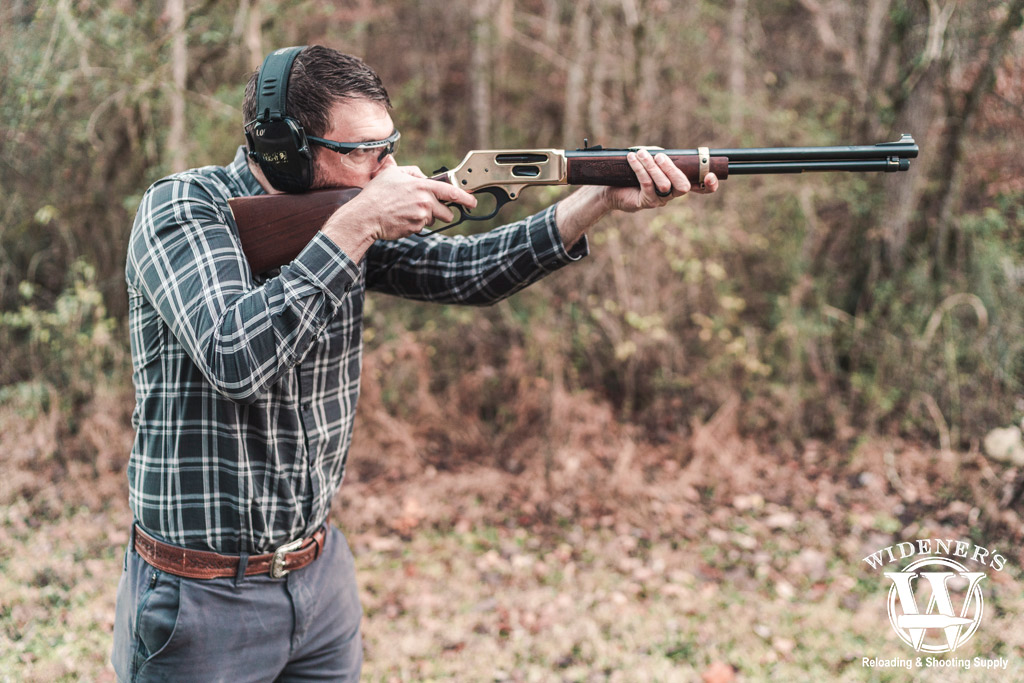
The .30-30 still gets the job done, but the .308 has better ballistic performance at distances beyond 100 yards.
Choosing between the 30-30 Winchester and .308 Winchester comes down to your specific needs and preferences. The 30-30 in a lever-action rifle is an excellent choice if you’re into close to medium-range hunting in dense environments. It’s a capable hunting round for those wanting to avoid added recoil. At 100 yards it provides performance that sportsmen can brag about while showing off their wall mounts. Plus, you get to shoot it out of a lever-action rifle. That’s what we call a win-win.
However, if versatility, long-range performance, and a wider selection of firearms are your priorities, the .308 Winchester is the superior option. It has the energy to take down games at distances and is a battle-proven round with a reputation for winning. It gives you more caliber options and is more widely available, depending on our location. Both cartridges have stood the test of time and remain favorites among hunters and shooters.


